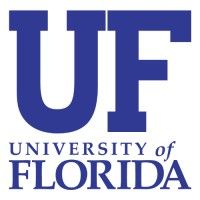预约演示
更新于:2025-05-07
Taxolog, Inc.
更新于:2025-05-07
概览
关联
5
项与 Taxolog, Inc. 相关的药物靶点- |
作用机制- |
在研机构- |
原研机构 |
在研适应症- |
非在研适应症 |
最高研发阶段终止 |
首次获批国家/地区- |
首次获批日期- |
靶点- |
作用机制- |
在研机构- |
原研机构 |
在研适应症- |
非在研适应症 |
最高研发阶段终止 |
首次获批国家/地区- |
首次获批日期- |
靶点 |
作用机制 微管蛋白抑制剂 |
在研机构- |
在研适应症- |
最高研发阶段终止 |
首次获批国家/地区- |
首次获批日期- |
2
项与 Taxolog, Inc. 相关的临床试验EUCTR2007-002083-98-HU
A Phase II Study of Milataxel (TL139) Administered Orally or Intravenously in Taxane Naïve Patients with Metastatic Breast Cancer.
开始日期2008-08-19 |
申办/合作机构 |
NCT00685204
A Phase II Study of Milataxel (TL139) Administered Orally in Patients With Malignant Mesothelioma
Milataxel is a new taxane that may have several advantages over the currently available taxanes. The current study is designed to determine the response rate of oral Milataxel in patients with malignant Mesothelioma. The study specifically targets patients who have recurring or progressive disease following previous chemotherapy.
开始日期2008-03-01 |
申办/合作机构 |
100 项与 Taxolog, Inc. 相关的临床结果
登录后查看更多信息
0 项与 Taxolog, Inc. 相关的专利(医药)
登录后查看更多信息
5
项与 Taxolog, Inc. 相关的文献(医药)2009-06-01·Anti-Cancer Agents in Medicinal Chemistry4区 · 医学
Can the Status of the Breast and Ovarian Cancer Susceptibility Gene 1 Product (BRCA1) Predict Response to Taxane-Based Cancer Therapy?
4区 · 医学
Review
作者: Monteiro, Alvaro N. A. ; DeLigio, J. Thomas ; Velkova, Aneliya ; Zorio, Diego A. R.
2009-04-01·Journal of Pharmaceutical and Biomedical Analysis3区 · 医学
Overcoming extractability hurdles of a 14C labeled taxane analogue milataxel and its metabolite from xenograft mouse tumor and brain tissues
3区 · 医学
Article
作者: Safarpour, Hudan ; Wilcox, Everett ; Connolly, Paul ; Bielawski, Mike ; Tong, Xiaojie
2008-07-01·Lab Animal1区 · 农林科学
Response to Protocol Review Scenario: More references required
1区 · 农林科学
Article
作者: Arrington, Heather A
100 项与 Taxolog, Inc. 相关的药物交易
登录后查看更多信息
100 项与 Taxolog, Inc. 相关的转化医学
登录后查看更多信息
组织架构
使用我们的机构树数据加速您的研究。
登录
或

管线布局
2025年11月01日管线快照
管线布局中药物为当前组织机构及其子机构作为药物机构进行统计,早期临床1期并入临床1期,临床1/2期并入临床2期,临床2/3期并入临床3期
其他
5
登录后查看更多信息
当前项目
| 药物(靶点) | 适应症 | 全球最高研发状态 |
|---|---|---|
TL-1892 | 肿瘤 更多 | 终止 |
TL-1836 | 肿瘤 更多 | 终止 |
Milataxel ( Tubulin ) | 恶性间皮瘤 更多 | 无进展 |
TL-310 ( Tubulin ) | 肿瘤 更多 | 无进展 |
Simotaxel ( Tubulin ) | 实体瘤 更多 | 无进展 |
登录后查看更多信息
药物交易
使用我们的药物交易数据加速您的研究。
登录
或

转化医学
使用我们的转化医学数据加速您的研究。
登录
或

营收
使用 Synapse 探索超过 36 万个组织的财务状况。
登录
或

科研基金(NIH)
访问超过 200 万项资助和基金信息,以提升您的研究之旅。
登录
或

投资
深入了解从初创企业到成熟企业的最新公司投资动态。
登录
或

融资
发掘融资趋势以验证和推进您的投资机会。
登录
或

生物医药百科问答
全新生物医药AI Agent 覆盖科研全链路,让突破性发现快人一步
立即开始免费试用!
智慧芽新药情报库是智慧芽专为生命科学人士构建的基于AI的创新药情报平台,助您全方位提升您的研发与决策效率。
立即开始数据试用!
智慧芽新药库数据也通过智慧芽数据服务平台,以API或者数据包形式对外开放,助您更加充分利用智慧芽新药情报信息。
生物序列数据库
生物药研发创新
免费使用
化学结构数据库
小分子化药研发创新
免费使用
